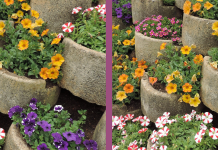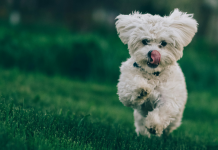Bees are such a precious part of our eco system and there has been some concern about their well-being over the last few years. Mass farming, pesticides and urbanization could certainly be playing a role in their declining numbers.
This is a huge problems simply because, without bees, we would not have a food chain. To put is simply, there are amongst the most important plant pollinators. Scientists believe that these little busy creatures pollinate at least 70 of the 100 main crops that feed the world. Without bees to pollinate, there would be no fruit and, ultimately no plants and no animals who rely on those plants to live.
All that our little bees require is pollen and nectar to make honey. At Granny Mouse, they work hard to ensure that their lovely gardens are not just good to look at but are biodiverse havens that play an important part in helping the Midlands bees thriving.
They not only play a hugely important part in the all-important farming that keeps our farmers producing fresh fruit and vegetables that make their way on to their restaurant tables but produce the honey that is found in most farm stores along the Midlands Meander.
Their gardeners would like to encourage you to join them in ensuring that your garden also plays and important part in preserving our precious bees.
If you do only two things, you’ll make an important contribution – plant flowers that are known to attract bees (especially indigenous ones) and try not to use pesticides that are detrimental to bees. When buying these sorts of products, check the labels and rather go for the greener, healthier pest control options.
Flowers that attract these wonderful hard working little creatures include primulas, borage, sweet thorn, weeping wattle, fuschias, geraniums, strelitzias, rosemary, linaria, blanket flowers, sage, scabiosa species, sunflowers, thyme, cosmos, blombos, lavender, bottle brush, aloes and most fruit tree blossoms.
Bees are especially attracted to purple, violet, blue, blue-green, yellow, ultraviolet and white flowers and prefer scented flowers.
Plan to keep the bees visiting by planting flowers that bloom at different times of the year. That way, you’ll enjoy plenty of colour and the bees will be well fed year-round.
When planning a garden – and especially if you have a larger one – leave some wild meadow-like areas as bees like natural wildness.
If you have a lawn, let some wild clover grow on it as some bees live in the earth so they’ll appreciate a little mud to go round. You can even provide a bee bath – but remember that aw bee bath needs to be shallower than a bird bath so try a shallow tray-like container for water.
You can also put some pretty marbles in a shallow pan and fill it with water – that way the bees will have somewhere to land and drink.
As we move towards winter and then on to the lovely spring in a few months’ time, the gardening team at Granny Mouse has one wish for you – may your gardens “bee” indigenous, buzzing, musical and beautiful.






